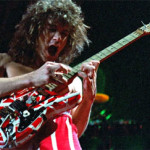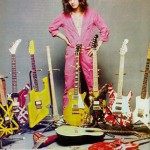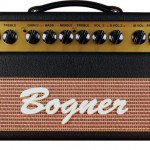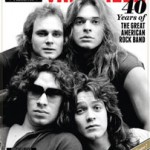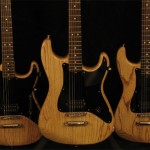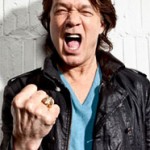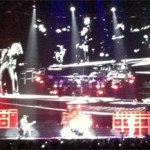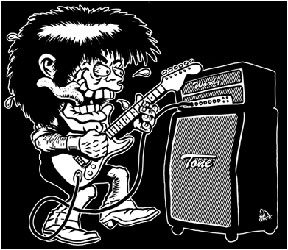Clapton Interviews and Gear, 1967 and 1976
‘Cocaine’ Rig Photo!
I’ve been sort of back-of-the-mind obsessed with (really more like “puzzled by”) Eric Clapton for a bit now. Ever since I saw him play on Joe Bonamassa’s Albert Hall DVD. I mean, there’s ERIC CLAPTON! – the fact that he’s Eric Clapton is cool on its own, but I wanted him to thrill me somehow, someway (tone, note choice, whatever) and he didn’t. Not that he was bad. Can’t happen. But where’s the fire?
More on that in a future episode (maybe), but it motivated me to go back and try to dig up what Clapton was using and thinking back when he had that fire. I found two interviews, one from June 1967 and one conducted in May 1976, both in old Guitar Player magazines. So here’s the juice:
1967 Interview
Some funny stuff in this interview, like the first line in the article: “Cream is just that—three jazz veterans skimmed off the top of British rock.” Yeah…. The article also says Clapton and Jack Bruce are both guitarists! But hey, it was 1967 and what did anyone know about guitarists back then.
Anyhow, as you can tell this interview was done when Clapton was in Cream, the most recently album being Disraeli Gears. The article says, “The group recorded Disraeli Gears in four days as sort of an ‘impromptu thing.’ Eric calls the album ‘kind of a cross between what we are like in the studio and what we’re like on stage.’
> The article says Clapton was using a “double cutaway Gibson” at the time, and which he also used with Mayall. I assume this is the ES-335?
> When recording they [Eric and Jack] use only one amplifier apiece, a Marshall. But on stage they build a different sound, using two separate 100-watt amps, each amp running through two large cabinets and each cabinet holding four 12-inch speakers. They don’t rely on feedback for intensity. Eric is opposed to feedback because he admits he has never been able to really control it.
> “Our music cannot be categorized because a lot of the material we play is not blues, it’s another thing completely, probably brand new. Our sound is like an old blues sound, but heavily amplified. The sound I’ve always wanted and like is the sound that all those people used on the very early records of Muddy Waters, you get it? It’s that sound, only much louder. I think a lot of people are getting hung-up about getting mechanical sound. They’re trying to invent ways of doing it to hide the fact they can’t do it with their fingers.”
> “I was nineteen when I left the Yardbirds. I intended to give up then. But John Mayall offered me a job and I took it because I needed the bread, and I needed some kind of identity too because I was very down.â€
> Eric had started playing the guitar at 16, a Kay electric with an old Vox amp his parents had bought for him.
May 1976
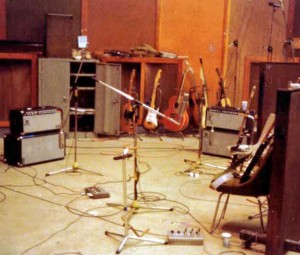
Here's Clapton's and George Terry's rigs just after they finished 'Cocaine'...the song! (georgeterry.com photo, click to see bigger)
At the time of this interview, Clapton was doing the final overdubs for his No Reason to Cry album. We’ll transition with a quote bout Cream, from the 1976 interview:
GP: Did it get tiring playing in bands, like Cream, where you had to solo constantly?
EC: Absolutely, it really did. Sometimes you just end up playing every lick you know before the end of the set, and then you’re f*cked, you know, because you’re just repeating yourself over and over again. I’ve really become more devoted to the song itself and the presentation of the actual music. I think jamming, unless it’s got a goal at the end of it, is pretty much a waste of time. It’s just like exercising or something. If you’re jamming, and something comes out of it and you make something that you can stand hearing again and has a form and turns people on, okay.
By this time he was playing Strats. The article had nothing about anything Eric particularly liked about Strats except they’re good “basic stage guitars.” Some good detail on amps though:
EC: Music Man is my favorite now [HD 130 Reverb] because they have dual volume controls. You can use them in the studio at low volume and still get a fair amount of distortion, just as if it were a really big amp. I also like their sound. They are just like Fenders – in fact, I think Leo had a big part in designing them.
(GP editor’s note: Actually, Tom Walker who worked for the Fender company from 1948 until 1969, was Music Man’s main designer, although many of the ideas were passed on from Leo Fender during their association in Fender’s pre-CBS days.)
GP: Were the amps you used previously more suited to your sound at that time?
EC: They [Music Mans] could have been used with cream. You can get exactly the same sound as you would with a Marshall, but then you can take it down to the same sound as a Champ. It’s really got a wide range.
(GP editor’s note: Roadie Willie Spears reports that Eric’s amps are beefed up, with the bias up all the way, by Walker at Music Man. This HD 130 Reverb has special open-back cabinets, as opposed to the folded horn type, with JBL 120 speakers. Eric also uses Leslie cabinet, with JBL components [and a custom foot switch]. The guitar can go either straight through the amp, through both the amp and the Leslie (fast or slow), or through just the Leslie at either fast or slow speeds – as on “Badge.” The only other effects pedal Clapton uses is a Cry Baby wah-wah.)
Info on strings and playing slide:
GP: Instead of bar chords, you seem to play down at the nut a lot.
EC: Those were the chords I learned. I also think when you’re using light strings, you tend to become a bit insecure about going up the neck too far with big, full chords. Because what will sound right at the bottom of the neck with light strings, by the time you’ve taken out 12 frets, could be out of tune.
EC on playing slide guitar: I approach it more like George Harrison. Duane [Allman] would play strictly blues lines. They were always innovative, but they were always in the blues vein. I’m somewhere in between him and George [Terry, at the time in Eric’s band] who invents melodic lines often on the scales.
GP: What do you use for a slide?
EC: A glass tube about the width of the neck of the guitar, so I can get all the strings covered. It’s a thick one [an Isis medium].
GP: Do you have any special guitar setup for slide?
EC: Yes, a Gibson ES-335. But it hasn’t got a high nut – I just raise it at the bridge. I don’t play down at the bottom much. I usually keep it up near the top frets. I use the same strings as I do normally on the other guitars, Ernie Ball Super Slinky [9, 11, 16, 24, 32, 42, same as now].
He said he plays slide in open G tuning, which he prefers because “you get more of a country sound. It’s more melodic.”
‘County Jail Blues’ off No Reason to Cry
Notable
> George Terry on first playing with Clapton: “When we first started jamming, all I wanted to do was help. My primary thing back then was to help him get back into playing guitar because he been slacking off for while and was out of the scene. We’d jam for two or three hours on one set of chord changes – just incredible guitar playing.”
> George wrote “Mainline Florida” (off 461 Ocean Boulevard), and made a mutt guitar using a Strat body and Tele neck, with a Tele bridge pickup right next a Strat single-coil in the bridge, a Strat pickup in the middle and a humbucker by the neck. What did he call his homemade guitar? “Frankie,” short for Frankenstein – sound familiar?
> At the time, George also used Music Man amps along with a Vox wah-wah and Ernie Ball Regular Slinkys (10s).
> He’s a funny guy too: “That’s when you know you’ve made it – when you hear your song on Muzak. It’s always melodies that people pick up, never any off-the-wall R&B thing.”
P.S.
Doing a “keep the lights on and do more cool sh*t” fund drive, will post about it soon. If you dig and look forward to WoodyTone, and find the info fun and valuable, please frickin’ donate! Options for a one-time $20 or $5/mo below. Gracias amigos! Vamonos!
$20 one-time
$5/mo recurring
Category: Eric Clapton, Ernie Ball/Music Man, ES-335, Music Man, Strat






